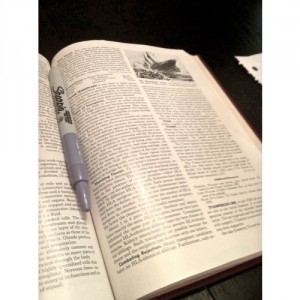Plagiarism is nothing new. Students have been plagiarizing far before the Internet was widely available -- whether it was copying from the encyclopedia or hiring professionals. But the Internet and the explosion of online resources has made it easier for students to get to those resources. You'll find a number of websites geared specifically to cheating -- sites where you can buy papers, for example. But even if students opt not to pay-to-cheat, the Internet does seem to make it easier to lift content. It's as easy as copy-and-paste.
But by those very same standards, it also means that plagiarism is much easier to identify. Even without purchasing expensive plagiarism-tracking software, instructors can Google suspicious-sounding sentences from students' work and determine whether or not they've lifted content from online resources.
Even though plagiarism is often easily identifiable via a simple Web search, many schools have opted to purchase one of the many plagiarism-checking software programs currently on the market. One of the best known options is TurnItIn, which has just released an interesting white paper, based on the 40 million some-odd papers that have been submitted and analyzed by the site.
Some of the key finds from the paper include:
- Plagiarism is going social: One-third of all content matched in the study is from social networks, content sharing or question-and-answer sites where users contribute and share content.
- Legitimate educational sites are more popular than cheat sites: One-quarter of all matched material is from legitimate educational web sites, almost double the number that comes from paper mills or cheat sites.
- 15% of content matches come directly from sites that promote and benefit from academic dishonesty: Paper mills and cheat sites are the third most popular category for matched content.
- Wikipedia is the most popular site for matched content: It remains the single most used source for student-matched content on the Web, comprising 7% of matches in the months examined.
The TurnItIn research suggests that students really are trying to "do the right thing." Noting the decrease in the number of students turning to sites that are clearly identified as "cheating," the white paper asks if our new digital culture -- one that promotes sharing, openness, and re-use -- is running counter to some of the "fundamental tenets of education -- the ability to develop, organize, and express original thoughts." The paper suggests that many students really aren't clear about what is legitimate re-use compared to plagiarism.


